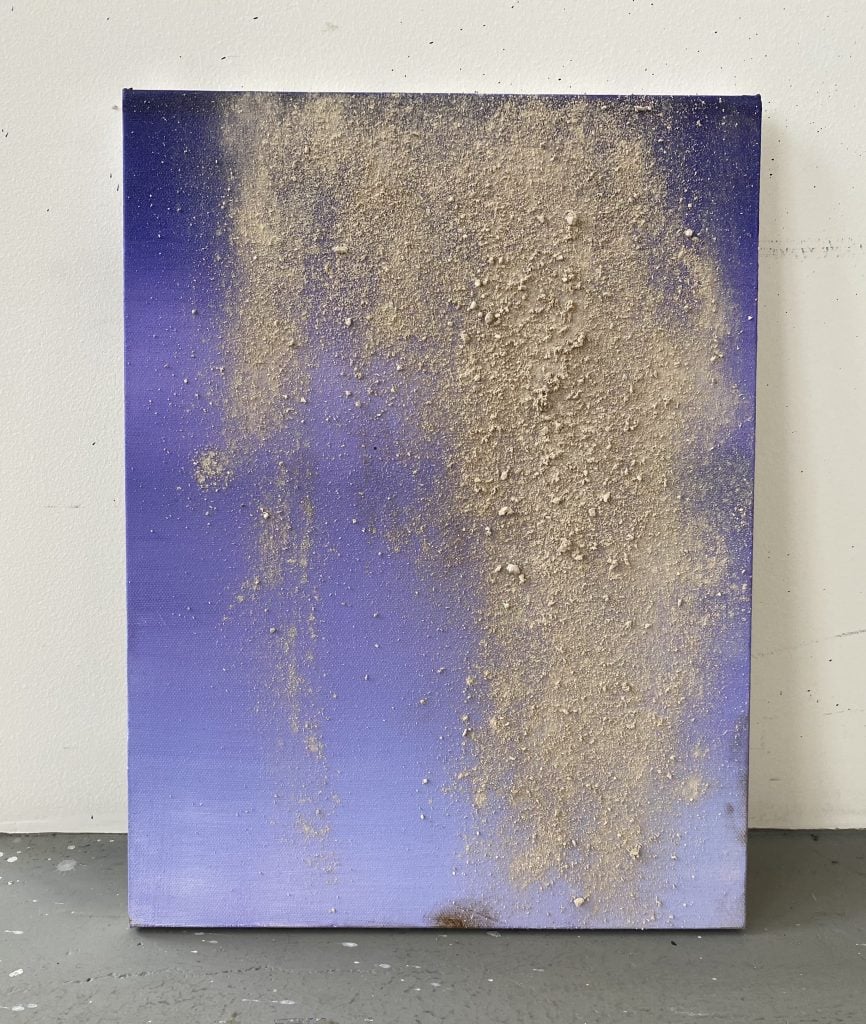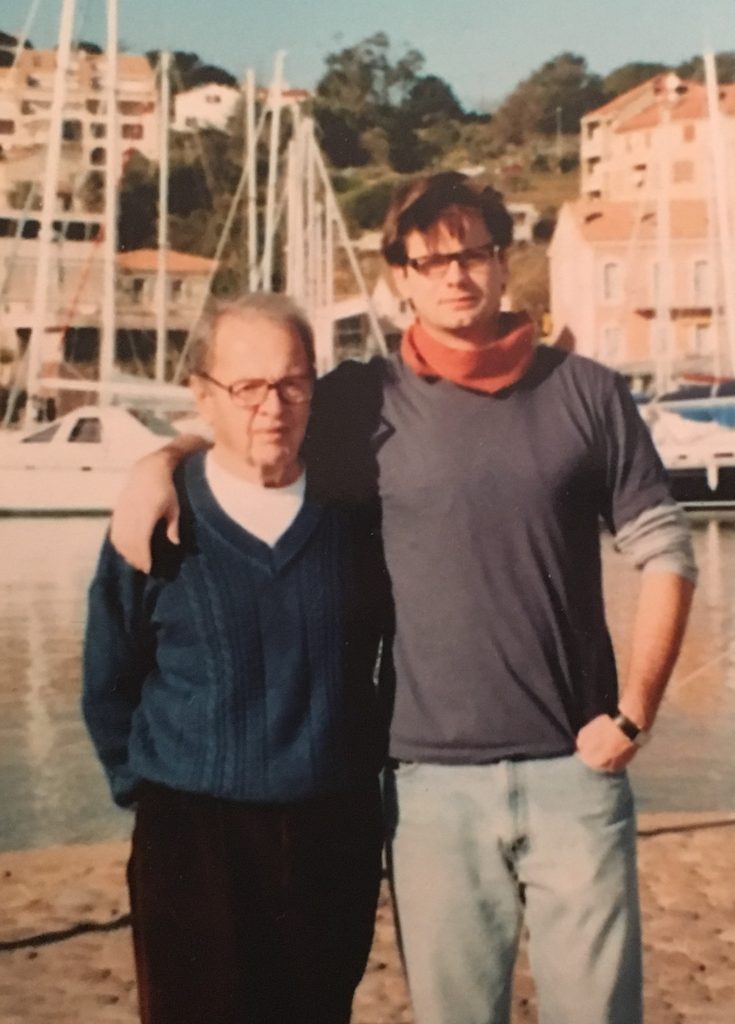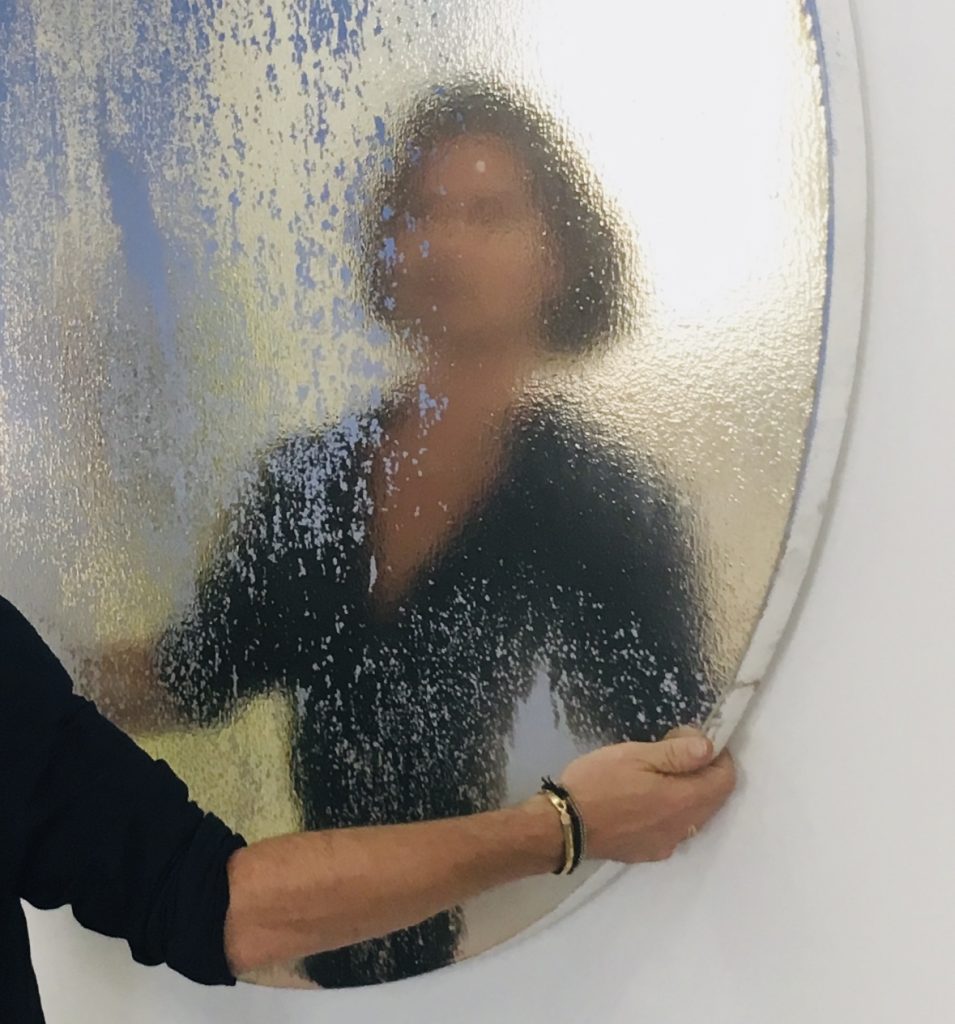Art World
After Art Dealer James Salomon’s Father Died, His Friend Nir Hod Had a Surprising Idea: Make a Painting From the Ashes
“A powerful and yet fragile feeling came over me in working with someone’s ashes," Nir Hod said.

“A powerful and yet fragile feeling came over me in working with someone’s ashes," Nir Hod said.

James Salomon

I was home, alone. Sort of. I couldn’t get any work done because I was fixated on the box resting on the dining room table. Inside was a clear plastic bag, some paperwork, and metal identification tag. The box summoned me, much as my father had my whole life.
My mind flashed to Keith Richards, where, in his book, he tells the story of snorting his father’s ashes. I grinned at how ludicrous that was, while “Midnight Rambler” started ringing in my ears. Dad loved his red wine until the very end, and as Keith’s guitar riffs grew louder in my head, I was convinced that this act must happen. If I had planned it out, I would have had his Bordeaux ready. Instead, there was a half-bottle of Chilean table wine laying around, which he liked and would have thought perfectly acceptable.
So I poured a third into a glass, opened up the bag, took a pinch and gave a sprinkle. My father would most certainly approve of the audacity. The ashes sunk to the bottom like pennies in a fountain. There was nothing errant floating on top or even the middle. They sunk. I looked down, then at the profile, and frankly I was rather relieved. I took my first sip and a warm glow came over me, I felt empowered by this symbolic unity. And, truth be told, I stopped short of that last big gulp. What I did was enough.
I told my wife what I’d done at dinner that night. She rolled her eyes, unfazed, then said, “Don’t tell anyone you did that.”

The writer with his father in Corsica, 2005.
Well, I did share with a few close friends, who shrugged with a “different strokes for different folks” attitude. The one person who was completely fascinated by this was my friend Nir Hod. Nir is a successful Israeli artist who lives in New York and has a studio at Mana Contemporary in Jersey City, right down the road from me. We’ve known each other for about 20 years, have worked on projects together, and helped each other out through professional and personal issues. He would come see me back when I had my little cottage in East Hampton and had met my father a few times.
Anyway, I’m alone with Nir and confess to this act, and he tells me that, for a long time, he has thought about doing a painting with someone’s ashes.
“Give me some. Let me do this for you,” he said.
My mind again flashed, this time to Sorrow, the taxidermied family dog in John Irving’s novel The Hotel New Hampshire. The whole thing was a little eccentric, but I’ve never heard of it been done before, so I’m going for it. By this time I had already given out little bell jars to a few family members, had plenty for myself, so what was a few tablespoons?
To some it all may sound like a strange experiment, but from Nir it was an act of good energy and kindness. I was nurturing his idea by taking it seriously, which is what a good friend and art dealer should be doing.
“This idea of a painting using ash continues the tradition of posthumous portraits. It may be challenging to the viewer, it may create emotion and give a different value to life and the meaning of life,” Nir told me.
I went back to the studio about a week later and dropped off a bell jar. We split hairs about the size for a while, but I left the color up to him. This was in early March, right before, well, you know.

Nir Hod with a work from his series “The Life We Left Behind.” Photo: James Salomon.
As we claw back to the remnants of how daily living once was, Nir was eventually able to get back to his studio and he recently showed me the finished painting. Not surprisingly, it reminded me of his “The Life We Left Behind” abstraction series, though the chrome we see in those compositions is replaced by a gritty layer that resembles moon dust, spread on a lavender backdrop. It’s a small painting that speaks softly, but with purpose.
“A powerful and yet fragile feeling came over me in working with someone’s ashes, their energy,” NIr said. “When finished, the artwork presents itself as an abstraction, but through memory you can visualize the subject, so it becomes a figuration in a metaphoric and conceptual way.”
I’m thrilled with all of it, and proud that my father’s presence is in our home in this manifestation. Is art life? Maybe. Art works in mysterious ways. It can take hold of you when you least expect it, especially during the healing process. Keep your eyes open, your mind, your heart. Enjoy and appreciate your beloved, because we never really know how much time is left in them.
Or in you.
Former gallerist James Salomon is an art dealer and independent curator. He occasionally writes articles and takes photographs that appear in Whitehot Magazine, Galerie, Portray, and Hamptons Cottages & Gardens. salomoncontemporary.com